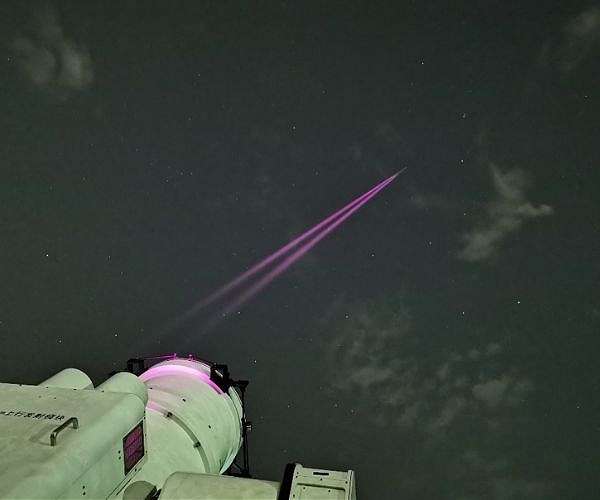China’s Aerospace Information Research Institute (AIR) and Changguang Satellite Technology have achieved a significant milestone in satellite-to-ground laser communications. They successfully conducted an experiment using a self-developed 500-millimeter-diameter ground system and the Jilin-1 satellite, achieving a speed of 10 gigabytes per second (GB/s).

The experiment yielded high-quality satellite payload data that meets the requirements for high-standard commercial applications. This achievement signifies that China has successfully implemented satellite-ground laser high-speed communication, entering the era of 10Gbps/s satellite-to-ground communication.
LI Yalin, head of the laser ground system at AIR, explained that current global satellite-ground communication relies on microwave technology, which has limited bandwidth and cannot transmit massive amounts of data. In contrast, laser spectrum resources are abundant and can transmit data at speeds up to 1000 times faster than existing microwave communications.
Yalin compared the bandwidth to a road, stating that the X band is one lane and the Ka band is four lanes, while lasers can accommodate hundreds or even thousands of lanes. Laser communication enables the transmission of a high-definition movie within one second, which is 10 to 1,000 times faster than current microwave communication methods.
Laser communication also offers advantages in terms of size, weight, power consumption, and security. Due to the small divergence angle and concentrated energy of lasers, satellites can be lightweight and achieve ultra-high-speed communication with significantly less volume, weight, and power consumption compared to microwave communication payloads. Additionally, laser communication improves security thanks to its strong anti-electromagnetic interference ability and good direction.
The team at AIR completed satellite-to-ground collaboration task planning and conducted experimental processes such as bidirectional laser signal acquisition, stable signal chain building, and adaptive optical correction. These efforts resulted in high-speed and highly reliable satellite-to-ground laser communications under unsteady channels.
Prof. WU Yirong, Director-general of AIR, highlighted the importance of this achievement for Chinese remote sensing satellites. Currently, the massive data obtained by these satellites cannot be transmitted to the ground in a timely manner, which significantly affects their effectiveness. The establishment of a national ground station network for satellite laser communication, based on existing microwave ground stations, will help resolve bottlenecks in satellite-to-ground communications in China and provide technical services across multiple applications.


 Copyright 2023 All rights reserved.
Copyright 2023 All rights reserved.